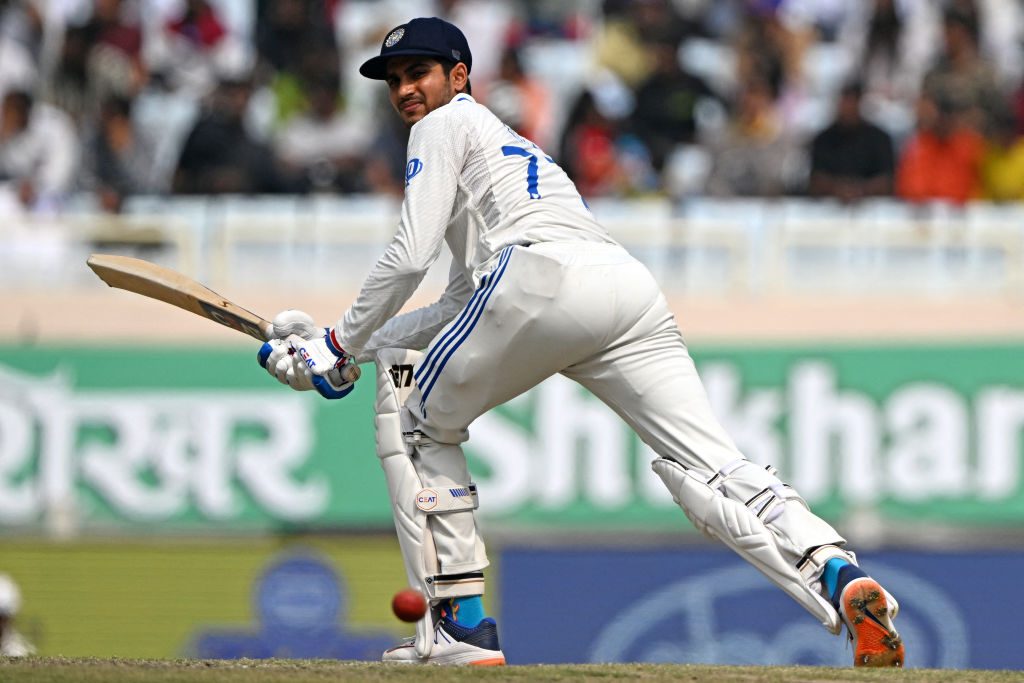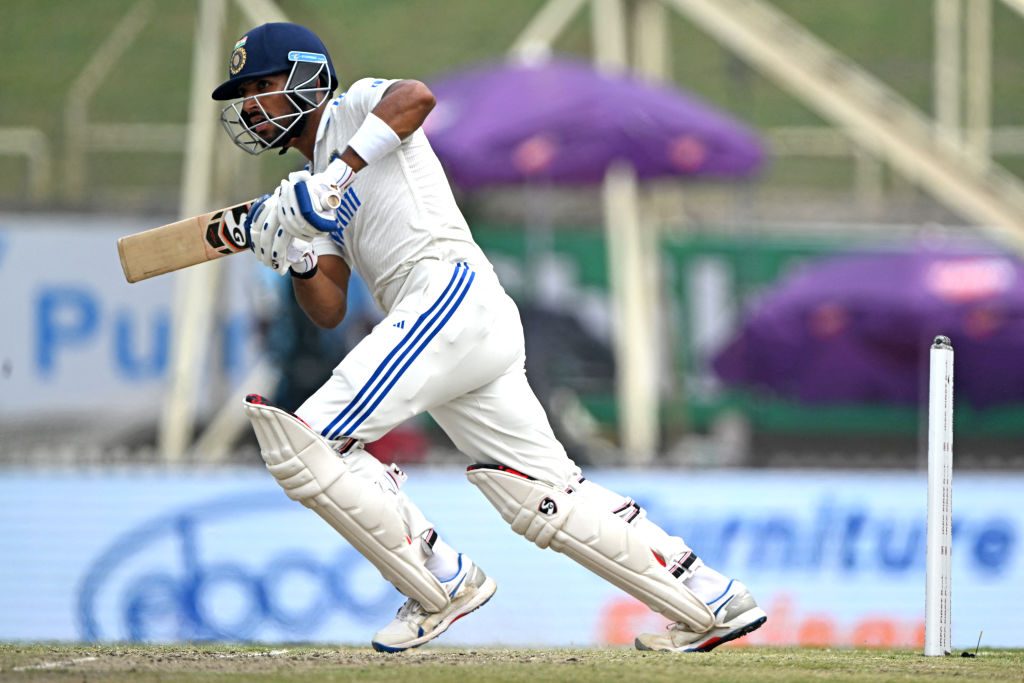
Shubman Gill and Dhruv Jurel added 72 runs for the sixth wicket to take India to victory in the fourth Test. Naman Agarwal, at the venue, details how the two youngsters conquered the tough Ranchi surface with contrasting methods.
Subscribe to the Wisden Cricket YouTube channel for post-match analysis, player interviews, and much more.
When Shubman Gill and Dhruv Jurel, with a combined age just six years more than James Anderson’s, came together on the fourth afternoon at Ranchi, India’s hopes had started to dwindle, and for good reason. While victory was only another 72 runs away, they had to deal with a pitch that had proved vexing for both sides throughout.
In a sport that has been around for close to two centuries, no one really has cracked the enigma that is reading a cricket pitch, and this surface took the challenge to new levels. Before the game, it was the subject of much speculation, with Ollie Pope discussing the “platey” cracks and Ben Stokes saying that “he had never seen anything like [it] before”. Stokes’ dismissal on the first morning of the game off a ball that shot along the ground let to Michael Vaughan labelling the pitch a “shocker”. After the Indian middle order crumbled on day two, Paras Mhambrey, India’s bowling coach said that they “didn’t expect it to be playing that low on the second day itself”.
But this wasn’t purely a minefield. After Stokes’ shooter, Joe Root and Ben Foakes played out a wicketless session, with the former going on to a century. Jurel’s rescue act on the third morning and R Ashwin’s five-for a few hours later gave India a bit more insight into the nature of the pitch. Jurel felt the lack of bounce didn’t allow runs to be scored square of the wicket, while Ashwin had to “use a lot of sidespin” to adjust to the bounce which was “almost near the shin height.”
[breakout id=”0″][/breakout]
Over the course of three and a half days, the Ranchi surface had changed its nature more than the definition of Bazball has in nearly two years. And after lunch on day four, it was arguably at its spiciest.
Yashasvi Jaiswal and Rohit Sharma’s attacking 84-run opening partnership had made India feel safer than they were. After Jaiswal was dismissed in the 18th over of the innings, India’s run-scoring came to a halt. Shoaib Bashir, Tom Hartley, and Joe Root banged away at a length, letting the natural variation of the pitch do the rest. India slipped from 84-0 to 120-5.
By then, Gill had batted himself into a shell. His 65 balls had fetched only 19 runs. His hard-handed blocks and pushes off the spinners were uncomfortable to look at. But they were keeping England at bay.
The usual antidote to a surface keeping low is to play off the front foot as much as possible. Gill was doing just that – committing forward with a large stride and jabbing down hard at the ball like he has always done. Time and again, he would step down the track to get to the pitch of the ball and drive the spinners down the ground.
[caption id=”attachment_605574″ align=”alignnone” width=”1024″] Gill was committed to his front-foot game during India’s run-chase. (Photo by TAUSEEF MUSTAFA/AFP via Getty Images)[/caption]
Gill was committed to his front-foot game during India’s run-chase. (Photo by TAUSEEF MUSTAFA/AFP via Getty Images)[/caption]
Stokes was as proactive with his field changes as a captain can possibly be. Fielders moved from one spot to the other after almost every ball. With not many runs to play with, Stokes had to nail the trade-off between attack and defence, which meant England didn’t have more than two catching fielders close to the bat at a time. It worked in Gill’s favour.
In the second innings of the Hyderabad Test, a typical hard-handed front-foot defence by Gill had landed in the hands of Ollie Pope at silly point. With no one under his eye here, it allowed Gill to press forward with ease. There were plays and misses, oohs and aahs, but Gill had the line of the ball covered more often than not.
At the other end, Jurel, fresh from a rescue act in the first innings, had a method of his own. Unlike Gill, he would let the ball come to him. Playing from the crease is usually not the recommended way to go about playing spin on the fourth day on a deteriorating surface that is keeping low. But Jurel had already shown that there was nothing usual about his skills and temperament.
[caption id=”attachment_605590″ align=”alignnone” width=”1024″] Jurel avoided committing to the front foot during India’s chase in Ranchi. (Photo by TAUSEEF MUSTAFA/AFP via Getty Images)[/caption]
Jurel avoided committing to the front foot during India’s chase in Ranchi. (Photo by TAUSEEF MUSTAFA/AFP via Getty Images)[/caption]
The ability to read lengths a fraction of a second quicker is what separates good batters from the best. Jurel’s handling of the length balls bowled by Bashir and Hartley by staying put in his crease and committing to the back foot whenever possible, and pressing forward or stepping down the track at the first sign of flight showed that he was reading the ball off the hand. Having kept wickets across two innings in the game must have helped in that regard as well.
The in-out fields didn’t allow many boundary opportunities for either batter. Jurel tried to go aerial early in his innings off Hartley but it didn’t come off. He got an outside edge that landed just short of third man. After that, both batters shunned the attacking option. Punches, drives, late cuts with soft hands, and nudges with the turn became the go-to shots for both for the next hour.
It was only when victory was in sight that Gill launched. With 20 more needed, he stepped down and hit Bashir for two sixes in three balls, reaching his third successive second-innings fifty of the series. Next over, Jurel opened his arms, pulling Hartley for four between mid-wicket and mid-on. Those were the last boundaries either batter hit before a gentle flick behind square by Jurel took India to victory. In a way, it was characteristic of how both had negotiated the challenge that the Ranchi surface provided – Gill predominantly looking to score off the front foot and Jurel reacting to the merit of the ball.
Reading pitches is an art that can never be mastered. Gill and Jurel might make numerous errors in judgement going forward in their careers. But today in Ranchi, they showed that as long as you have a strong foundation, there’s no right way to adapt to a pitch, there’s only your way.








